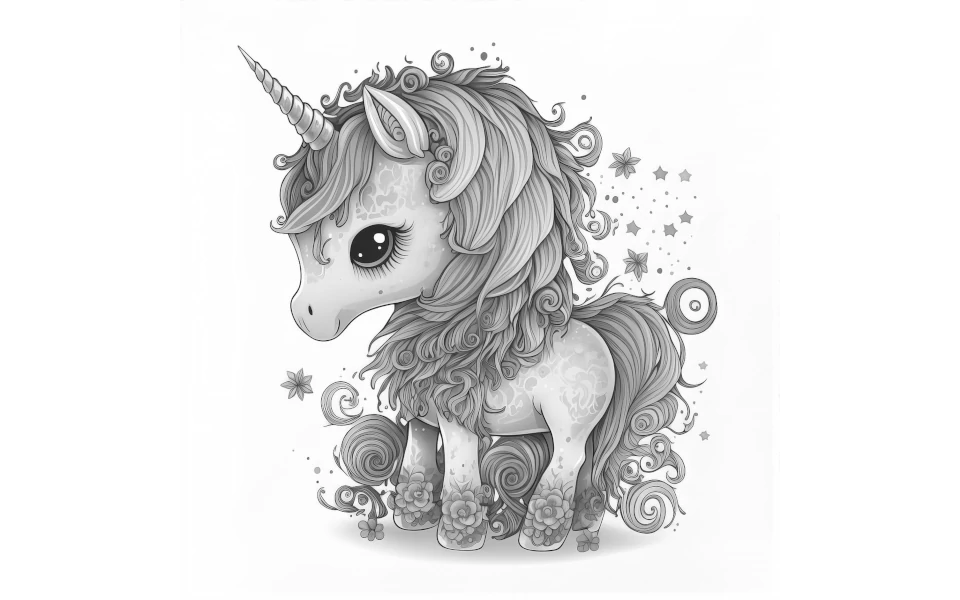
From Ancient Myths to Modern Pop Culture: History of Unicorns
Unicorns are very famous creatures that people believe in, even though they don’t really exist in real life. They are often depicted as horse-like creatures with a single, spiraled horn on their forehead. But where did this mystical creature originate from?
The Ancient World
Ancient Greek literature first mentioned unicorns. They were described as fast and fierce creatures with a single horn. The Greek historian Ctesias wrote about them in the 5th century BC, claiming they lived in India and were impossible to capture alive. Historians believe that traders who traveled along the Silk Road may have introduced unicorns to the Greeks.
In Roman mythology, unicorns were linked to the goddess Diana. They were seen as symbols of purity and innocence. They were also said to have the ability to purify water by dipping their horn into it.
The Bible also mentions unicorns. They were described as strong animals with horns. It is believed that they were in the Garden of Eden but not on Noah’s Ark.
The Middle Ages
During the Middle Ages, the unicorn became a symbol of purity and grace. It was often depicted in medieval art and literature. In these depictions, the unicorn was shown as a gentle and peaceful creature, with a single, spiraled horn that symbolized its unique and magical nature.
The concept of the unicorn hunt also emerged during this time. The hunt was a popular subject in medieval tapestries and paintings and was often used as a metaphor for the pursuit of spiritual enlightenment. The unicorn was believed to be elusive and difficult to capture, making the hunt a symbol of the struggle to attain spiritual purity.
In addition to being a symbol of spiritual purity, the unicorn was also believed to have healing powers. Its horn was thought to have the ability to cure sickness and disease and was often used in potions and medicines.
The Renaissance
During the Renaissance, the unicorn continued to be a popular subject in art and literature. It was often depicted as a symbol of purity and chastity and was associated with the Virgin Mary. The unicorn was also featured in the works of famous Renaissance artists and writers, including Leonardo da Vinci and William Shakespeare.
In the famous painting, “The Lady and the Unicorn,” the unicorn is depicted as a symbol of purity and is shown holding a banner that reads “Mon seul desir,” or “My only desire.” The painting is believed to be a representation of the five senses, with the unicorn representing touch.

The original image is a colored one.
Modern Times
In modern times, the unicorn has evolved to become a symbol of positivity, imagination, and magic. It has appeared in a variety of popular culture forms, from movies and TV shows to clothing and accessories. The unicorn has also become a popular subject for children’s books, with many stories featuring unicorns as the main characters.
The unicorn’s enduring appeal can be attributed to its unique and magical nature. It is a creature that has captivated the imaginations of people for centuries, and its legend has endured through the ages. The unicorn continues to be a symbol of hope, purity, and wonder, and its popularity shows no signs of fading away anytime soon.

Conclusion
The history of unicorns is a fascinating journey through time that reveals how this mythical creature has captured the imaginations of people across different cultures and time periods. From ancient Greece to modern-day popular culture, the unicorn has continued to be a symbol of magic, wonder, and positivity.
Unicorns still inspire and captivate people of all ages today. Their popularity is not decreasing. They remind us of the power of imagination and the importance of hope and positivity in our lives. So the next time you see a unicorn, remember the rich history behind this magical creature and the many cultures that have been captivated by its allure.
FAQs
Are unicorns real?
No, unicorns are not real creatures. They are purely mythical.
What does the unicorn symbolize?
The unicorn has been associated with purity, grace, innocence, and magic throughout history.
How did the unicorn hunt become a popular subject in medieval art?
The unicorn hunt was used as a metaphor for the pursuit of spiritual purity and enlightenment.
Why do unicorns have a single horn?
The single horn is a unique feature that symbolizes the unicorn’s magical and mystical nature.
Why are unicorns popular in modern culture?
Unicorns are popular because they represent positivity, imagination, and magic. They remind us of the power of hope and wonder in our lives.
